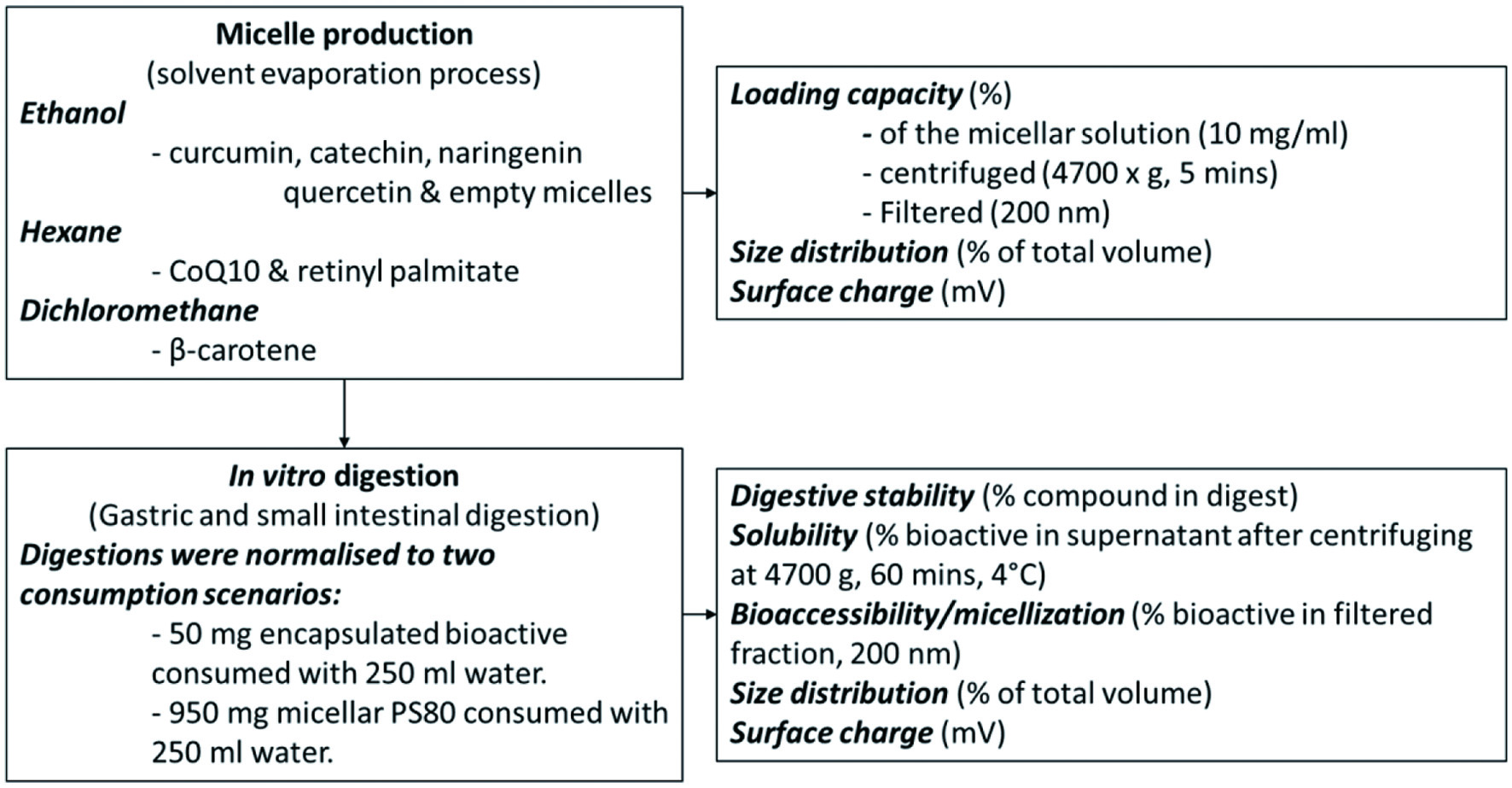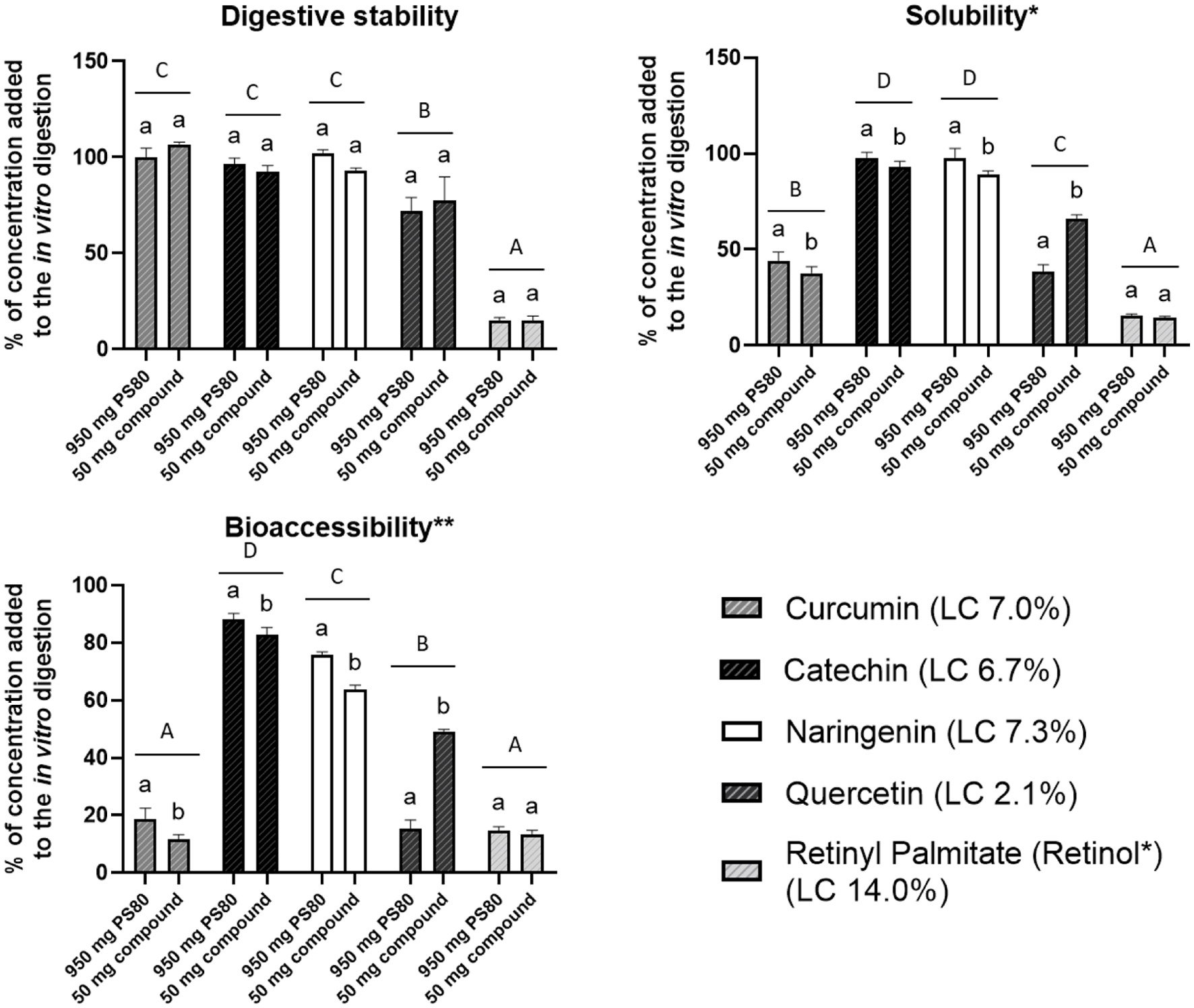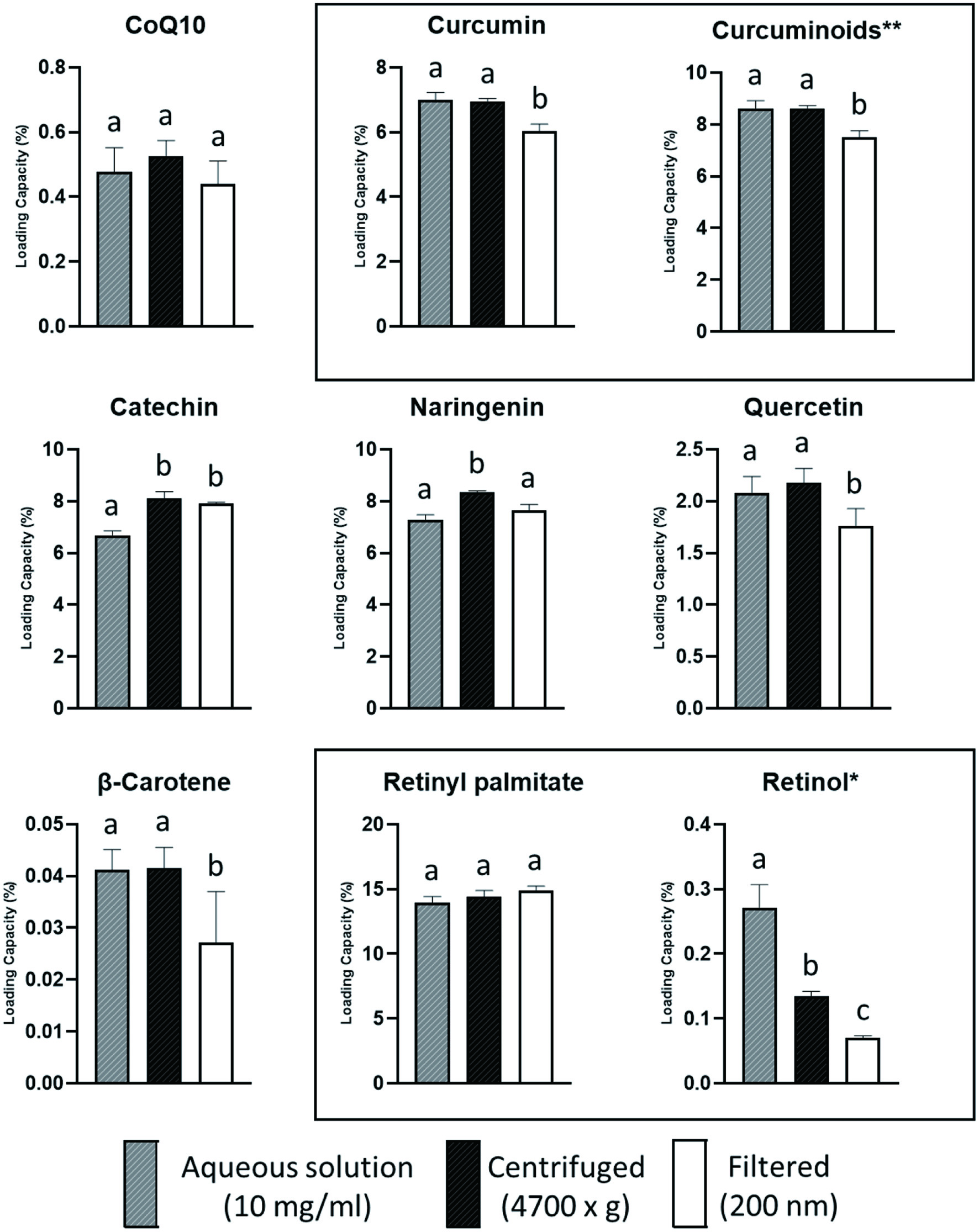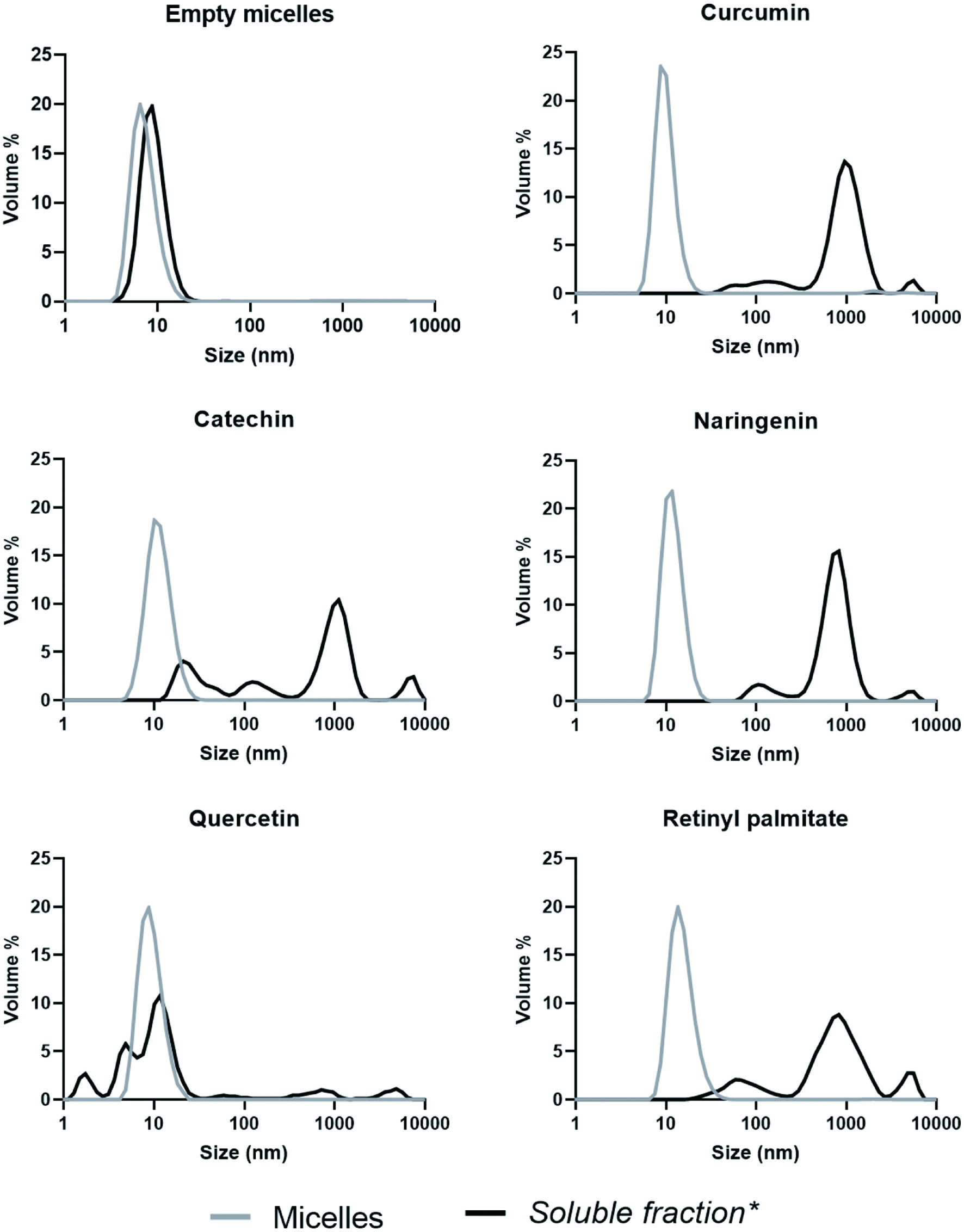
Figure 1. Experimental design.
| Journal of Food Bioactives, ISSN 2637-8752 print, 2637-8779 online |
| Journal website www.isnff-jfb.com |
Original Research
Volume 17, March 2022, pages 18-26
Effectiveness of micellization with polysorbate 80 on the in vitro bioaccessibility of various bioactives
Figures




Tables
| Bioactive | Molecular weight (Da) | Hydrophobicity (logPoct/wat) | Water solubility (25 °C) (mg/L) | Melting temperature (°C) | Polar surface area (PSA) (Å2) | Rotatable bonds |
|---|---|---|---|---|---|---|
| All information was obtained from Pubchem (NCBI, 2021), except where indicated differently a(Villalba et al., 2010), b(Srinivas et al., 2010a), c (Shulman et al., 2011), d(Srinivas et al., 2010b). | ||||||
| CoQ10 | 863.3 | 19.4 | Insolublea | 50–52 | 53 | 31 |
| Curcumin | 368.4 | 3.2 | 3.12 | 179–183 | 93 | 8 |
| Catechin | 290.3 | 0.4 | 2,260b | 214 | 110 | 1 |
| Naringenin | 272.3 | 2.4 | 9.8c | 251 | 87 | 1 |
| Quercetin | 302.2 | 1.5 | 2.15d | 316–318 | 127 | 1 |
| β-carotene | 536.9 | 17.6 | 0.6 | 176–184 | 0 | 10 |
| Retinyl palmitate | 524.9 | 13.6 | Insoluble | 28.5 | 26 | 21 |
| Empty micelles | Curcumin | Catechin | Naringenin | Quercetin | Retinyl palmitate | |
|---|---|---|---|---|---|---|
| Data are presented as mean ± SD, n ≥ 8, values with different lowercase letters in the same row and different capital letters in the same column, differ significantly (p < 0.05). *Supernatant taken after the in vitro digests was centrifuged (4,700 ×g, 60 min, 4 °C). **Supernatant taken after the in vitro digests was centrifuged and filtered (200 nm). | ||||||
| Micelles | −3.63 ± 1.53A,a | −3.96 ± 1.29A,a | −5.03 ± 2.18A,ab | −7.03 ± 2.30A,b | −6.72 ± 2.18A,b | −5.93 ± 2.90A,ab |
| Soluble fraction* | −44.65 ± 2.00B,a | −59.08 ± 3.12B,c | −50.81 ± 1.95B,b | −49.54 ± 2.53B,b | −45.44 ± 2.93B,a | −62.80 ± 2.52B,c |
| Bioaccessible fraction** | −44.75 ± 1.97B,a | −67.68 ± 2.76C,c | −53.11 ± 2.65B,b | −47.33 ± 1.89B,a | −46.38 ± 2.78B,a | −68.68 ± 3.36C,c |